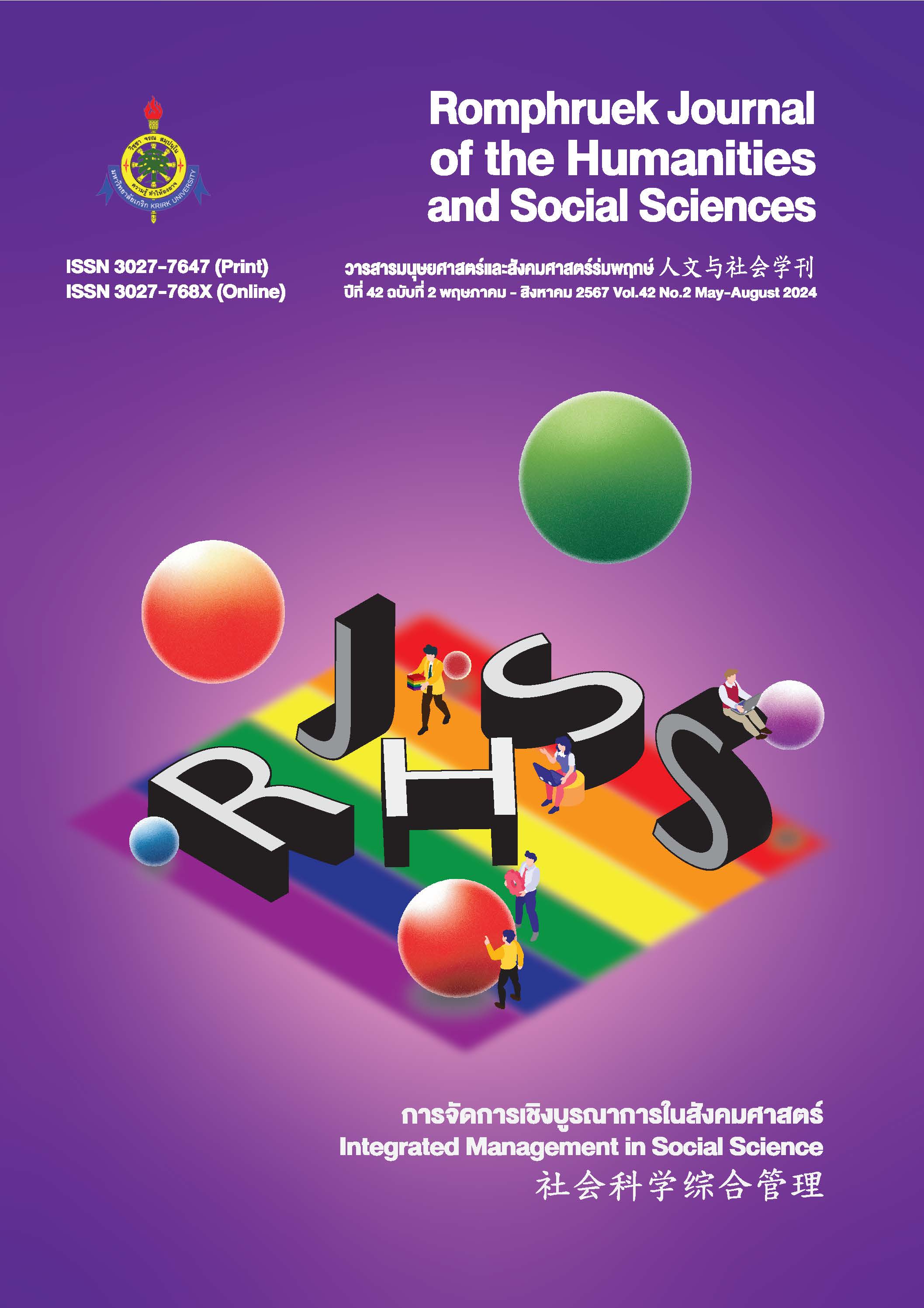The Creation of Value-Added Water Hyacinth for Career Development through the Community Participation of Bang Bua Thong Sub-district, Nonthaburi
Main Article Content
Abstract
This research is centered on the investigation and development of new occupational contexts related to utilizing the abundant aquatic plant, water hyacinth, to create value-added and sustainable livelihoods along the Klong Phra Pimol canal. The study revealed the potential for developing new sustainable occupations within the Klong Phra Pimol community. The enhanced value solved environmental problems brought on by the growth of water hyacinth in the canal and increased community income as well. The promotion of financial management skills and systematic record-keeping for community enterprises was essential for this development. Product development and market expansion were essential for realizing the potentiality of water hyacinth. Community cooperation and networking were vital for effective operations, and exploring new opportunities could significantly enhance local resources' value. This research had fostered the creation of knowledge and skills for cultivating and managing water hyacinth, diversifying its transformation into various products, and developing marketing and business management skills necessary for the community to effectively sell water hyacinth products. Moreover, it underscored the importance of community networking and cooperation to access broader markets and resources.
In conclusion, the research findings indicated that utilizing water hyacinth could significantly contribute to the economic sustainability and environmental conservation of the community. But in order to take full advantage of these prospects, the community needed to build strong networks and acquire a variety of skills. This research attempted to increase community revenue in addition to protect the local environment. The changes initiated by this research may lead to long-term sustainable development and strengthen the community.
Article Details

This work is licensed under a Creative Commons Attribution-NonCommercial-NoDerivatives 4.0 International License.
Every article published in the Romphruek Journal of the Humanities and Social Sciences is the opinion and point of view of the authors. Thery're not the viewpoint of Krirk University or the editored department. Any part or all of the articles for pablication must be clearly cited.
References
กรกนก จันทร์ประภาส เยาวภา ปฐมศิริกุล และ บัณฑิต รัตนไตร (2565). การตัดสินใจทางการตลาดสำหรับการประกอบธุรกิจเครื่องดื่มเพื่อสุขภาพ. วารสารการบริหารจัดการและนวัตกรรมท้องถิ่น, 5(4),71 -85.
กำธร แจ่มจำรัส นันทนิธิ์ เอิบอิ่ม ญาณิศา เผื่อนเพาะ และฤดี เสริมชยุต. (2565). การยกระดับและเพิ่มมูลค่าผลิตภัณฑ์ของฝากของที่ระลึกของแหล่งท่องเที่ยวสัมผัสเสน่ห์วิถีชีวิตเมืองกรุงเก่าจังหวัดพระนครศรีอยุธยา. วารสารศิลปการจัดการ, 6(3),1585-1603.
ทิพย์วิมล ประวัติเจริญวิทย์. (2565). ปัจจัยส่วนประสมทางการตลาดที่มีอิทธิพลต่อกระบวนการตัดสินใจซื้อสินค้าแบรนด์เนมมือสองของประชากรในกรุงเทพมหานคร (สารนิพนธ์ปริญญามหาบัณฑิต มหาวิทยาลัยรามคำแหง). Baabstract. http://www.baabstract.ru.ac.th/index.php/abstractData/viewIndex/1033.ru.
สำนักงานปลัดกระทรวงสาธารณสุข (2563,25 เมษายน ) แนวปฏิบัติการให้ประชาชนผู้รับบริการหรือกลุ่มผู้มีส่วนได้ส่วนเสียเข้ามีส่วนร่วมในการดำเนินงานของสำนักงานปลัดกระทรวงสาธารณสุข ฉบับปรับปรุง.สำนักงานปลัดกระทรวงสาธารณสุข.(Stopcorruption). https://rb.gy/ixgu7f.
Andrew, C., & Stiefel, M. (1980). Inquiry into Participation: A Research Approach. UNRISD.
Panakan Warawattananon. (2566, 21 August). Digital Marketing คืออะไร? การตลาดดิจิทัลที่ทุกคนต้องรู้จัก Marketing. (Search Studio).https://noria.co.th/th/what-is-digital-marketing/.
Schiffman, L. G., & Wisenblit, J. L. (2015). Customer behavior (11th ed). Prentice Hall.
Solomon, M. R. (2018). Consumer Behaviour: A European Perspective (3rd ed.). Prentice Hall.


